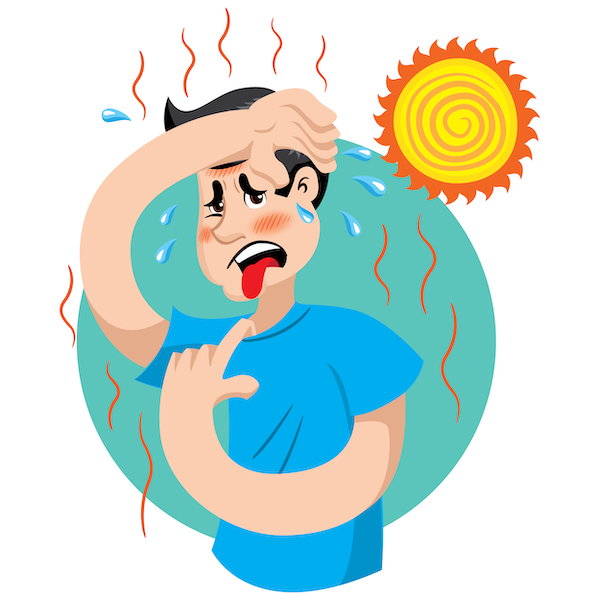Signs Of Heat Related Illnesses

Summertime brings us outside to enjoy walks, bbq’s, swimming, biking and more. While being out in the sun is a lot of fun, it’s important to remember that you may experience one of two potentially serious conditions – heat stroke and heat exhaustion. Knowing the difference between them and how to address them is crucial.
The easiest way to tackle this duo is to stay hydrated with water and electrolyte-containing drinks like coconut water or fruit juice. Staying cool is another excellent way to avoid these heat-related issues.
Heat Exhaustion Explained
Heat exhaustion is a condition characterized by dehydration which is a depletion of your body’s water, electrolytes and salt. It can cause dizziness, headache, nausea or vomiting, fast pulse, muscle cramps, fatigue, fainting, and heavy sweating. If you experience any of these symptoms, you should act immediately.
To avoid heat exhaustion, limit your time sitting in direct sunlight, wear loose-fitting, light-colored clothing and avoid strenuous outdoor activity especially mid-day or during extremely hot weather. And always stay hydrated.
If you are experiencing symptoms, get out of the sun immediately and into a cool place. While you should drink water immediately, be cautious about drinking too much, too quickly. You can actually over-hydrate with can also add muscle cramping, confusion, fatigue, nausea and headache to existing symptoms.
If the symptoms linger more than an hour or worsen, seek medical attention right away. If you have a medical alert system, you can request assistance from wherever you are.
What is Heat Stroke?
Heat stroke is the result of your body’s temperature rising dramatically. It can be a life-threatening medical emergency that should not be taken lightly.
Heatstroke is a condition caused when your body overheats and is unable to dissipate the heat within your body. It is often a result of physical exertion or prolonged exposure to high temperatures.
Preventing heat stroke is similar to heat exhaustion prevention – keep cool, stay hydrated, and take frequent breaks from the heat and sun.
However, the symptoms of heat stroke differ slightly from those associated with heat exhaustion so knowing the difference can save lives. Heat stroke is characterized by high body temperature, a lack of perspiration, hot red or flushed, dry skin, a rapid pulse, loss of consciousness, and difficulty breathing. Heat stroke & heat exhaustion also share common symptoms such as nausea, dizziness, and confusion. As you can see, heat stroke is far more serious than heat exhaustion.
It is important that if you notice any of these symptoms, you seek help immediately since heat stroke is a medical emergency. LifeFone uses your customized personal care instructions to notify EMT’s, doctors, family, and friends or your condition and helps you get fast help when needed.
Enjoy the summer months but remember to monitor your time in the sun and remain aware of any symptoms you may be experiencing.
- Bridging the Gap: Supporting Seniors Without Nearby Family
- Distance Caregiving Simplified: Modern Strategies for Compassionate Support
- Why LifeFone is the Best Choice for Your Loved Ones Safety and Security
- Beyond Medical Emergencies: The Versatility of Medical Alert Devices in Fall Detection and Beyond
- How to Get Up Safely After Taking A Fall
FREE BROCHURE Today!
